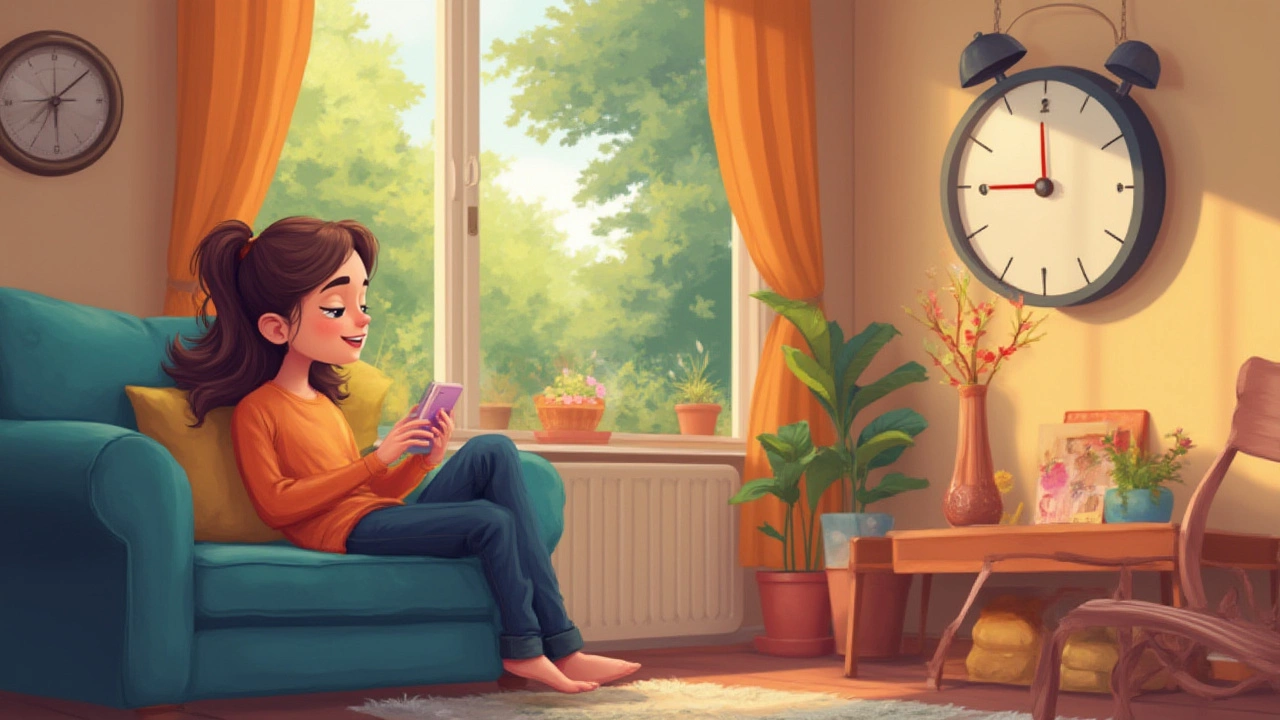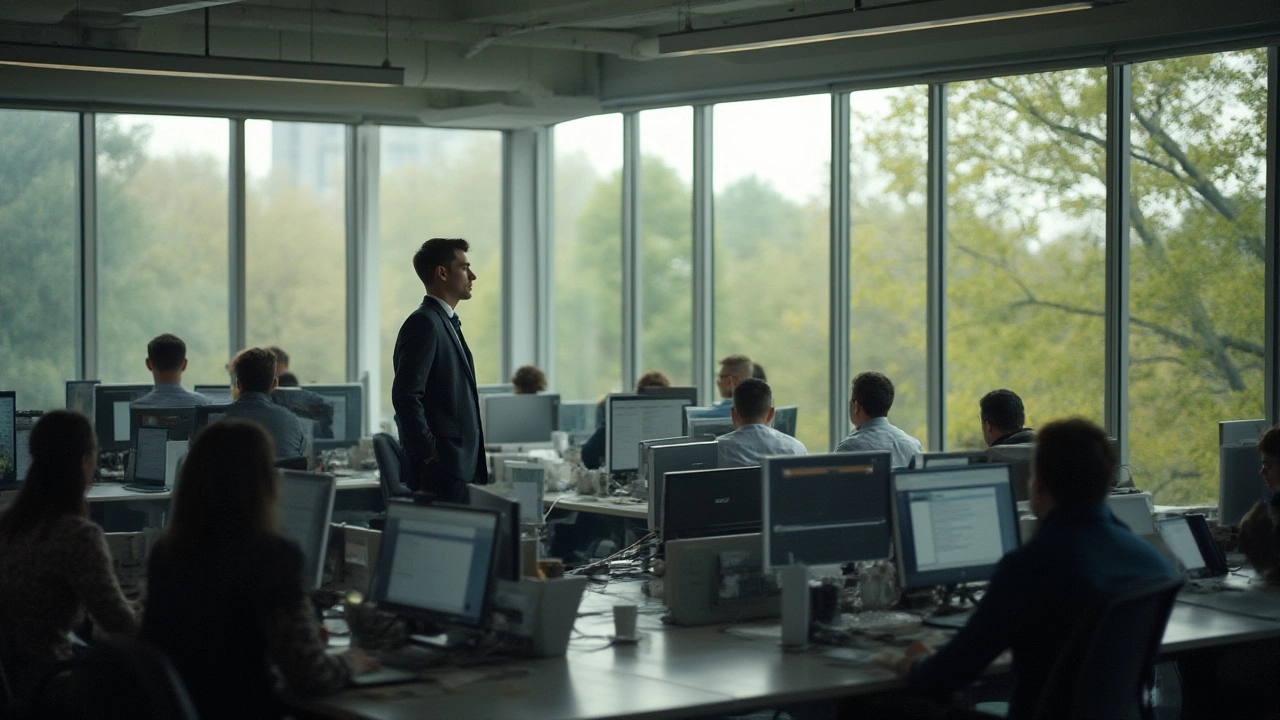Ever noticed your eyes throbbing after hours of scrolling on your phone or laptop? You’re not alone. Screen time is a bigger part of life than ever, and eye strain is basically the cousin that crashes every digital get-together. Everyone keeps talking about the 20-20-20 rule, but is that still enough? Turns out, some smart folks recently gave this old rule a makeover, and you might want to tune in—especially if your job, hobbies, or even your kids’ schools depend on staring at screens all day.
Where the 20-20-20 Rule Started (and Why It Needed Updating)
The original 20-20-20 rule started floating around about a decade ago, pushed by optometrists everywhere. Simple enough: Every 20 minutes, take a 20-second break, and look at something 20 feet away. That tiny break intends to give your eyes a mini-vacation from close-up focus, relaxing the eye muscles that get worn down from constant near work. Back then, it was about preventing Computer Vision Syndrome, which was mostly a concern for office workers glued to their desktops.
The tech revolution has since made the original recommendations feel a bit outdated. In 2023, some eye health studies started to point out that our digital world isn’t the same as it was in 2013. People aren’t just glancing at bulky monitors—they’re bouncing between phones, tablets, e-readers, laptops, and even VR sets. Digital screens emit more blue light, the contrast is sharper, and we hold most devices closer to our eyes compared to desktops. The result? Our eyes are now taking an even harder hit, especially for kids and teens who may clock over 10 hours of screen time a day according to a Washington Post report from late 2024.
These shifts in device use led researchers in Canada and Australia to push for a fresh take. Their 2024 analysis, published in the "Journal of Digital Health," showed that even with the 20-20-20 pattern, many reported eye redness, blur, and headaches, especially among students and remote workers. People simply weren’t remembering the rule or found 20 seconds barely gave relief—like barely sipping water when you’re parched. So the conversation turned to tweaking the rule to make it more effective and realistic for modern routines.
The Revision: What Has Changed in the 20-20-20 Rule?
So, what’s different now? The modern revision still runs with that catchy triple-twenty pattern, but it layers on some key upgrades. First, several expert groups now recommend stretching that short break up to 30 seconds if possible—turns out, doubling the break time gives eye muscles a better chance to relax and refocus, according to the American Academy of Ophthalmology update from January 2025.
But it’s not just about looking away and daydreaming for 20-30 seconds. The revision encourages folks to do a full blink during those breaks. You’d be surprised by how we tend to stare and barely blink when reading or doomscrolling. Studies show people blink about 50% less often in front of screens, which dries out the eyes and leads to the common sandpaper feeling. So, during your break, consciously blink several times.
Another tweak? Moving your gaze isn’t enough if you’re glancing at your phone across the room or fixing your eyes on another screen. The rule now specifically covers focusing on something natural at a distance where possible, like greenery out the window, a piece of art, or a clock across the wall. This change aligns with research hinting that nature views and varying your focal distance help soothe the visual system more than merely picking a random distant object indoors.
One more update—frequency got a nudge. For people under intense screen schedules (think coders, remote workers, teens doing school on tablets), experts are nudging toward a 15-15-30 pattern: every 15 minutes, take a 15-second pause to look at something 30 feet away, or as far as possible. While the 20-20-20 rule remains a minimum, this tighter interval is better for high-use situations. Parents with kids locked into online school, here’s your ammunition for more break reminders.
Here’s the revised step-by-step:
- Set a timer (phone alarms or smartwatches do wonders)
- Every 20 minutes (or 15 for heavy screen users), look away from your screen
- Focus on an object at least 20 feet away (or 30 feet, if possible) for 20-30 seconds
- Make sure to blink fully several times during the break
- If you can, pick a window or step outside—nature soothes your eyes even more

Making the Rule a Habit: Tips for Busy People
It’s one thing to know the so-called “rules of eye care,” but trying to wrangle kids or keep up with deadlines means all those good intentions can go out the window. How do you actually make this work when life is a constant scroll and tap? Let’s get practical.
First, alarms are your friend. Most parents already use reminders for everything—lunch breaks, school pickup, feed the goldfish—so why not add a “screen eyes break” timer? Choose a silly ringtone and let your kid pick it out; mine, Caspian, loves anything that sounds like a spaceship landing.
Instead of everyone in the family scattering to their own corners, do the eye break together. Have a staring contest out the window or see who can name the most objects in the neighbor’s yard during the break. This turns awkward reminders into fun mini-games or challenges, making it a routine instead of a chore.
Schools are beginning to catch on, too. Caspian’s class started mini “eye yoga” every hour—stretching, tight blinking, and tracking a stuffed animal around the room with their eyes. Teachers told me it cut down on the number of complaints about headaches and tiredness. If your kid’s school doesn’t have a similar thing, ask if they’ll try it out for a week, or suggest letting students decorate “eye break” cards to flash at their desks.
For grown-ups at work, software like Stretchly or EyeLeo gives desktop reminders you can’t ignore. These pop up with customizable intervals and even playful eye-exercise suggestions, like focus shifts, eye circles, or voluntary full blinks. If you do lots of phone work, there are even screen filter apps that dim blue light or gently pause your screen until you look away.
The trick is to pair these eye breaks with something rewarding. Grab a snack, stretch, step outside for even one minute if you can, or just share a joke with whoever’s nearby. This trains your brain to treat the break as a welcome reset, not a productivity killer.
Busting Myths and Little-Known Facts About Eye Strain
Most people think wearing glasses is the only way to protect your eyes from screens, but there’s more to the story. The whole craze over “blue light eyeglasses” isn’t as clear-cut as the ads want you to believe. A 2024 study in "JAMA Ophthalmology" found blue light filters in glasses made almost no difference in reported screen fatigue. Eye strain mostly comes from long bouts of focusing up close, not the color of light. Remember, it’s the ciliary muscles doing overtime, not just light bombarding your eyeballs.
There’s another kicker: the strictness with which we follow the 20 20 20 rule seems less important than keeping our eyes moving and hydrated. Think of your vision like exercise—the more variety, the better shape it stays in. Alternating your gaze near and far, mixing in natural daylight, and blinking regularly builds resilience. Even people who claim they “don’t have time” for breaks end up with fewer headaches and clearer vision by stacking these micro-habits.
A lot of parents worry screens will make their kids go “cross-eyed” or ruin their eyesight forever. Truth: Myopia (near-sightedness) is linked to lack of outdoor time more than anything else. Speeding up the breaks and encouraging kids to get outside—even for 15 minutes a day—lowers the risk dramatically, according to Chinese studies that tracked thousands of schoolchildren over five years. So that after-dinner walk or game of catch in the yard is serious eye protection in disguise.
Some people swear by eye “workouts” like rolling your eyes in circles, tracking a pencil, or practicing focusing near and far. While there’s limited hard proof these will turn you into an eagle-eyed superhero, these exercises do keep your eye muscles from stiffening up, especially if you already feel that “dry eye” scratch by mid-afternoon. Bonus: they’re a great excuse to get silly with your kids or coworkers and shake out the screen fatigue.
Remember, the revised 20-20-20 rule isn’t just about ticking boxes—it’s about giving your eyes the same regular tune-ups you’d give your phone or favorite sneakers. Set those reminders, get creative with your breaks, stick your head out the window a little more often, and know your vision is getting the TLC it deserves.

